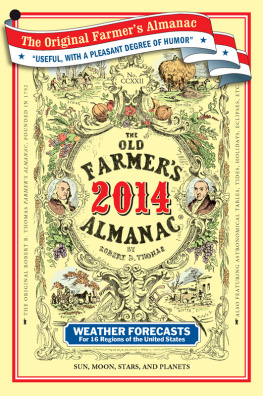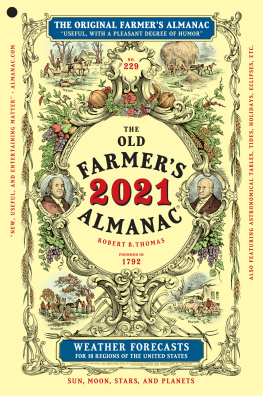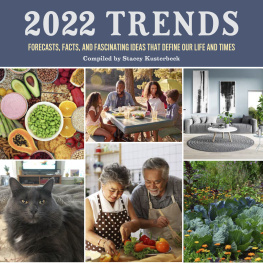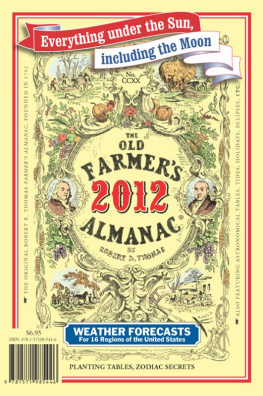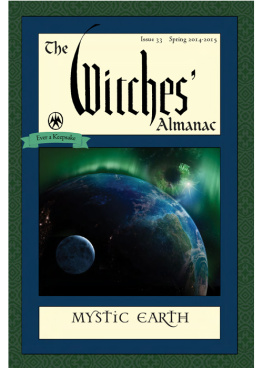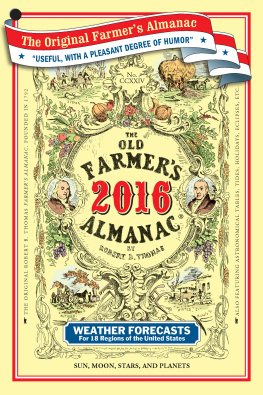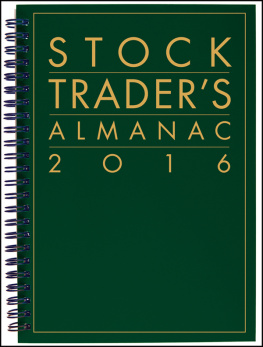To Patrons
Once (a Year) Is Not Enough
An almanac, according to MerriamWebsters Collegiate Dictionary, is a publication containing astronomical and meteorological data for a given year, and often including a miscellany of other information.
Certainly that describes this Almanac: Astronomical data? Absolutely. Meteorological data? Daily. For a given year? Preciselyand then some. Miscellany? More than most.
Indeed, we who labor to maintain this Almanacs place in our time and its purpose in modern life, as our predecessors did in their day, understand this genres components and its span. Each year, we aim to execute and so meet (or, perchance, exceed) readers expectations around the clock, in any weather, on any matter.
It was managements new idea, presented in a meeting last year, that we could not predict or, initially, fathom: a monthly Almanac. For an instant, time stopped. Then, as if on a ship in a storm, we, the editors, pitched and yawed against these winds of change, sensing to the depths of our beings that our anchor in tradition was irretrievably lost. (Dear reader, if you, too, are railing right now, we sympathize and urge restraint as you read on.)
Finally, sinking spirits paused to gasp for air. In that moment, managements second lightning bolt struck our masthead: The Almanac Monthly will be an e-bookand unique in the genre.
As details were unfurled, color returned to ashen faces. This muchloved annual would continue in this print form, with Calendar Pages intact, weather forecasts in full, miscellany unmatched, and more pages than ever.
The Almanac Monthly contains timely, seasonal, typical Almanac articles in full color about astronomy and calendar events, gardening, outdoors, food and cooking, home and home remedies, history, how-to, and more, plus (a first!) weather forecast updates. Whats more, the technology of the electronic magazines pages allows reading matter to be enriched with audio recordings as well as how-to and other videos. (To learn more or see for yourself go to Almanac.com/Monthly.)
While with the Almanac Monthly we may be bending the definition of the genre, we are also setting the course for our future and continuing the legacy of our founder, Robert B. Thomas. Be assured, however, that our goal and obligation in all of our endeavors remains the same: to make Almanacs that you, our loyal users, find consistently and unfailingly useful, with a pleasant degree of humor.
J. S., June 2013
However, it is by our works and not our words that we would be judged. These, we hope, will sustain us in the humble though proud station we have so long held in the name of
Your obedient servant,

Visit Almanac.com
Always useful, with a pleasant degree of humor!
ALMANAC.COM/WEATHER
Get daily forecasts, folklore, blogs, history, and detailed reference.
ALMANAC.COM/GARDENING
Grow more, better, right now!
ALMANAC.COM/ASTROMOMY
Everything under the Sun, including the Moon, every day (and night)
ALMANAC.COM/COOKING
Make meals easy and delicious with thousands of free recipes.
ALMANAC.COM/NEWSLETTERS
- Almanac Companion:
Subscribe
(its free!)
for timely new ideas and special offers. - Recipe Box:
Subscribe
(its free!)
for seasonal recipes, contests, blogs, and more.
ALMANAC.COM/BLOGS
Experts share weather, gardening, cooking, and health ideas, and readers talk back.
ALMANAC.COM/CONTESTS
Win fabulous prizes!
Share photos or recipes, test your trivia knowledge, enter our drawingshave fun!
ALMANAC.COM/VIDEOS
Learn how-to or get a giggle with us in the garden and kitchen, on full Moon days, and more.
ALMANAC.COM/MOBILE
Now optimized for your smartphone browser, with companion apps, including Full Moon Finder and more.
ALMANAC.COM/STORE
Discover unique collections of made-in-the-USA weather, gardening, and cooking products, plus a whole lot more!
ALMANAC.COM/FEEDBACK
Got a question? A comment? We love to hear from you!

Like us on Facebook.

Follow us on Twitter.

Pin us on Pinterest.
2014 Trends
Compiled by Stacey Kusterbeck
ON THE FARM
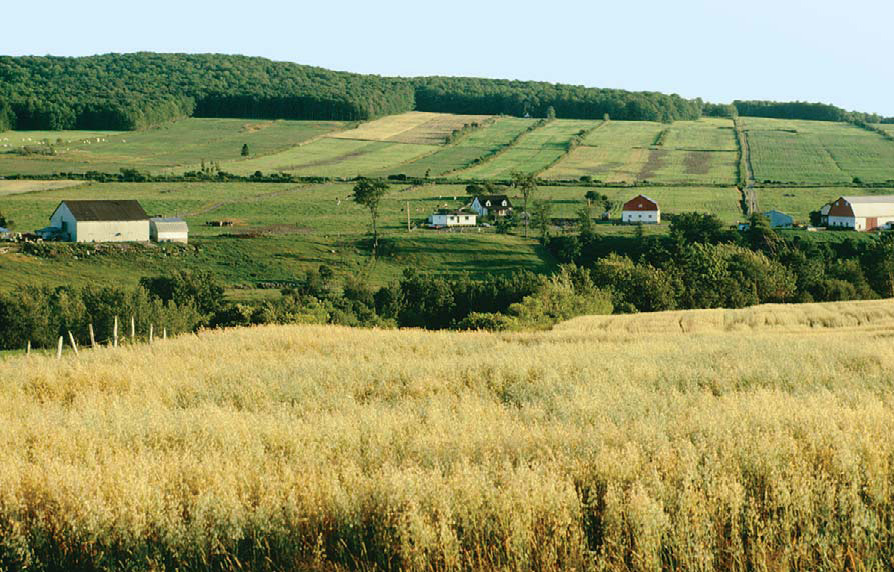
Look for more of our cities and suburban areas to adopt codes that allow residents to keep chickens, goats, and other livestock more commonly found down on the farm.
Kirsten Conrad Buhls, extension agent, Fairlington Community Center, Arlington, Virginia
Now Growing
- peacotum: a reddish-yellow fruit that is part peach, apricot, and plum
- new varieties: crispier romaine lettuce, sweeter seedless watermelons, milder onions, and antioxidant-rich broccoli
- heirloom flours of ancient grains: einkorn, sorghum, millet, and teff
- corn that requires less water
- perennial grains, making annual plowing unnecessary
- seaweed on farms in the ocean, for use as food and biofuel
Managing invasive exotic plants, protecting streams from sediment runoff, and maintaining wildlife connectivity are providing benefits to the health of the land, livestock, and crops.
Thomas Woltz, principal, Nelson Byrd Woltz Landscape Architects, New York City
Coming Soon
- automated tractors that operate without a person behind the wheel
- robots with foam-padded hands that pick strawberries without bruising the fruit
- trucks with cameras to locate oranges and hydraulic arms to knock the fruit loose from the trees
- small, helicopter-like drones to fly over crops and transmit pictures that show farmers whether plants are healthy
Urban Undertakings
- vertical farms in abandoned factories, with vegetables grown on small rafts floating on water, nourished by waste produced by fish (aka aquaponics).
- community orchards kept year-round by members who get to harvest the fruit for themselves
- community vegetable gardens on land occupied by apartment buildings, churches, fire stations, and businesses
BY THE NUMBERS
$28 billion: cost of damage by wildlife to crops, landscaping, and infrastructure
63 percent: portion of acreage farmed using conservation tillage, which reduces erosion on cropland while using less energy
7,800+: number of U.S. farmers markets (top three states: California, New York, Massachusetts)
600+: farmers markets in Canada
$2 billion: spent annually at North American farmers markets

